This was published 5 years ago
Danube Delta, Romania: The Blue Danube and the wild blue yonder
By Kerry van der Jagt
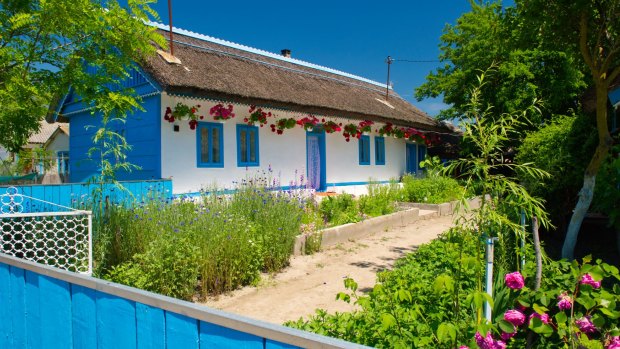
Blue is the trim of choice in the village of Letea.Credit: Shutterstock
The Danube River rarely lives up to its rhapsody-in-blue reputation – more often a herby green or grubby brown – yet here in Romania's Danube Delta blue is the only shade on the colour wheel. From the cerulean sky to the periwinkle flowers, the azure lakes to the cobalt ponds, this 4152-square-kilometre wetland looks like it's been hand-painted by Smurfs. Even the houses are trimmed in a startling shade of aqua.
"People living in the delta believe the colour blue keeps mosquitos away," says our guide George, leading us ashore to the small village of Letea. "If something stands still long enough, they'll paint it blue."
My favourite features are the enclosed cottage gardens, divided by blue paling fences and watched over by pairs of arched windows, their powder-blue hoods reminding me of '70s eye makeup.
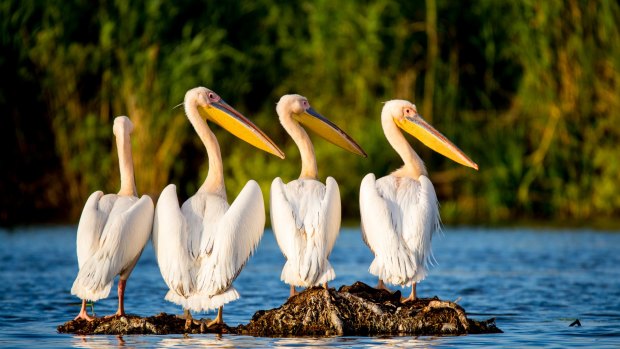
The UNESCO-listed wetland is a peaceful haven to more than 300 species of birds.
This is the region of Dobrogea, a maze of channels, marshes, lakes and reed islands in the far east of Romania where the Danube River empties into the Black Sea after its 2860 kilometre journey from the Black Forest.
It is day two of my 13-day journey from Bucharest to Kiev travelling through Romania, Moldova and Ukraine with Intrepid Travel. There are no roads into the delta so we'd left the port of Tulcea by small boat, time travelling back to the 1800s in the two hours it takes to reach the island of Letea.
Locals, mainly descendants of an ancient sect who left Russia over 200 years ago, still traverse the small islands by horse-drawn cart. Old ladies gather on corners, their heads covered by triangular scarves, wild horses roam the grasslands and in every back garden stacks of dried reeds point to the sky like golden pyramids.
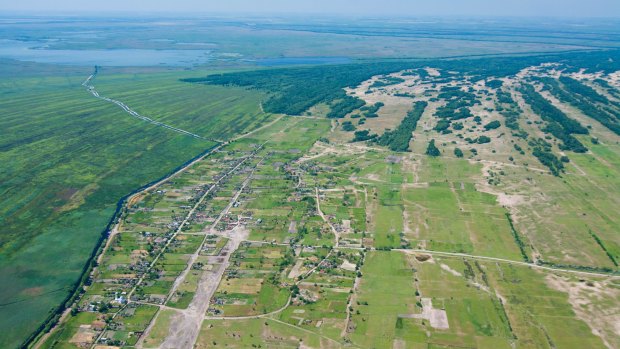
An aerial view of the village of Letea.Credit: Shutterstock
Boasting the largest single expanse of reed beds in Europe, the UNESCO-listed wetland is a peaceful haven to more than 300 species of birds, including 450 breeding pairs of Dalmatian pelicans that arrive each March. "Spring is the best time to visit," says George, pointing to a flock of pelicans performing a choreographed dance in the sky.
After a harsh winter, spring is also the time for feasting, the fish-based diet now supplemented with fresh vegetables. As part of Intrepid Travel's commitment to "real life" experiences, we are invited to share lunch with a family.
The meal digs deep into local customs with stews and soups made from carp and catfish served family-style with polenta, potatoes and garlic cream on the side. Dessert is a hot doughnut, pulled straight from the reed-heated vats, the surplus pressed into our hands for our hike through the island's sand dunes.
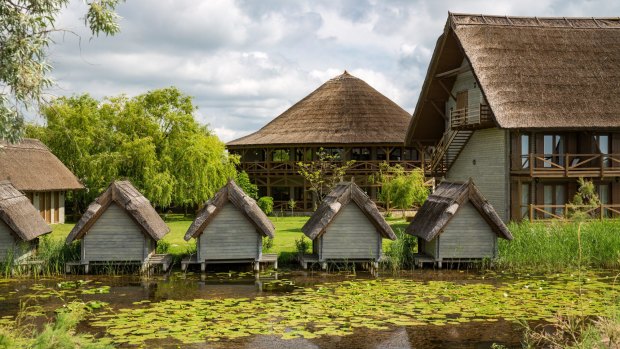
Buildings in Romania's Danube Delta.Credit: Shutterstock
Part of the Letea Forest, the dunes are banded with tracts of woodland, the alternating green and white rows forming a unique ecosystem. Home to 500-year-old trees, sand vipers, electric-blue dragonflies and rare orchards, all tied together by the tendrils of sub-tropical creepers, this watery delta is more Borneo of the Black Sea than Venice of the east.
Back on our boat the village disappears and the sky takes over. Here and there sunken houses sail into view like wooden ships on a blue ocean. Overhead white-tailed eagles hover against an enamel sky. Rounding a bend we pass two fishermen in a traditional long boat, their bright blue shirts a jaunty match to the inky scarf below. Yes, the Blue Danube does exist, you just need to head to Romania.
TRIP NOTES
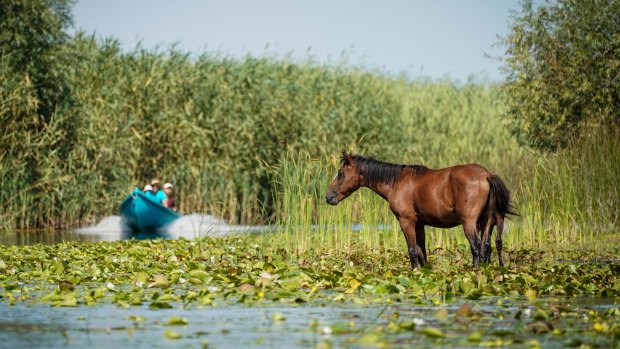
Wild horses in Romania's Danube Delta.Credit: Shutterstock
MORE
TRAVEL
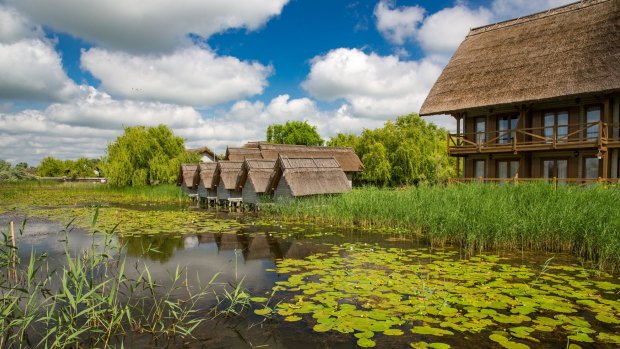
Buildings in Romania's Danube Delta.Credit: Shutterstock
Emirates flies from Sydney and Melbourne to Bucharest, Romania, via Dubai. See emirates.com. Tulcea is four hours by road from Bucharest.
TOUR
Intrepid Travel's 13-day Moldova, Ukraine and Romanian Explorer costs from $2772 a person, twin share. See intrepidtravel.com
Kerry van der Jagt was a guest of Intrepid Travel.
Sign up for the Traveller Deals newsletter
Get exclusive travel deals delivered straight to your inbox. Sign up now.